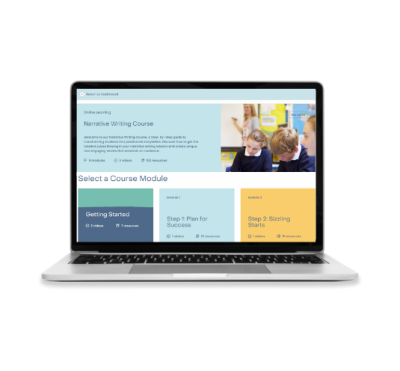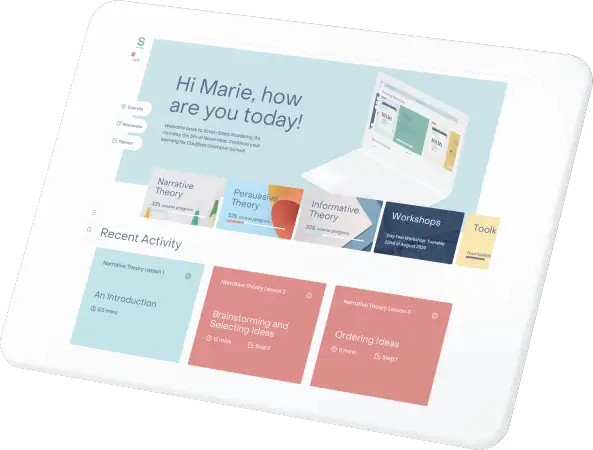How do you teach great narrative writing?
Narrative writing is much more than just fiction. It can be easy to assume that narrative writing and fiction are one and the same, but they’re not. Fiction describes imaginary events and/or people. Narrative writing is an account of connected events, regardless of whether they are real or not.
Did you know that most popular books, movies and fairy tales follow a similar narrative structure? Understanding this basic structure will improve your students’ narrative writing by giving them a framework around which to build their stories.
Teaching your students to write a narrative piece involves training them on the skills and techniques authors and writers use. You’ll need to help them understand what great narrative writing looks like and the skills writers use to create the biggest impact.
The Seven Steps chunking and skilled-based approach will help any new learner to improve and become masters of story-telling.
Teach great narrative writing with these free resources
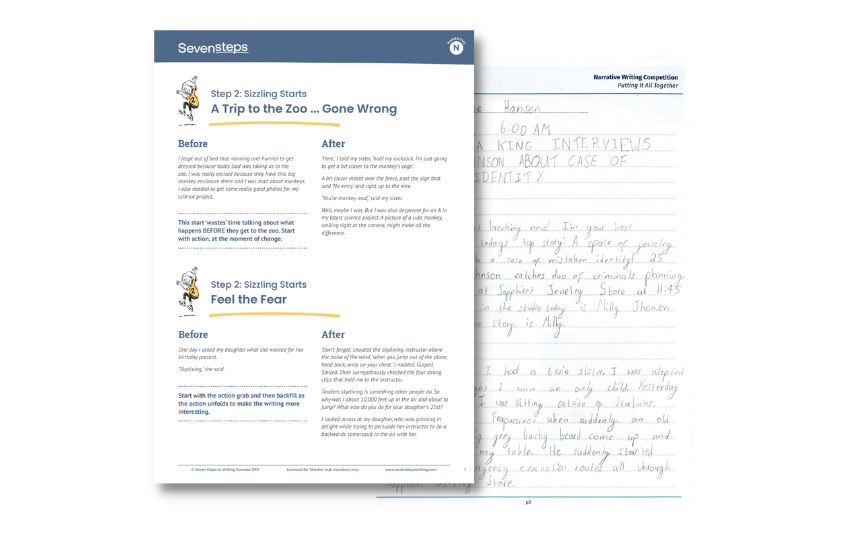
Writing examples
Our free Narrative Writing Examples collection includes:
- before and after examples
- student writing examples
- lists of mentor texts
- books plotted on the story graph.
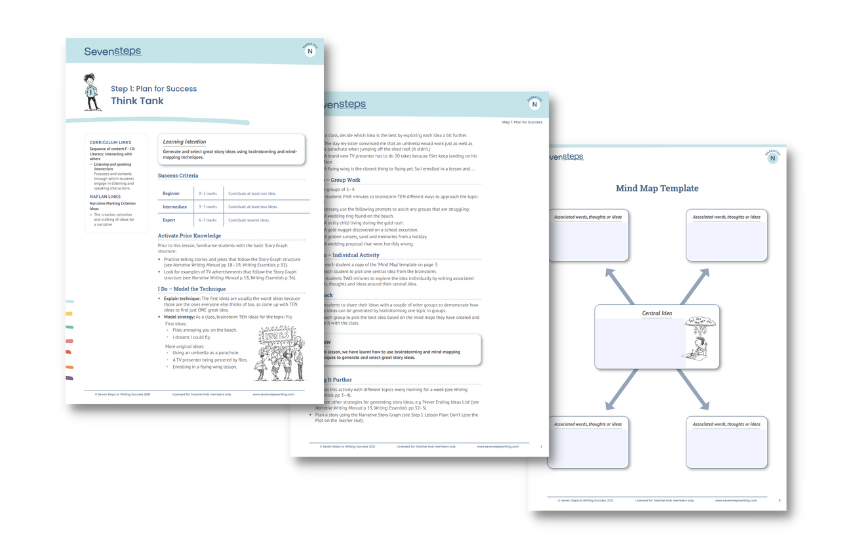
Lesson plan and template
Get a ready-made template and lesson plan that includes:
- links to the Australian Curriculum
- a learning intention
- success criteria
- differentiation ideas.
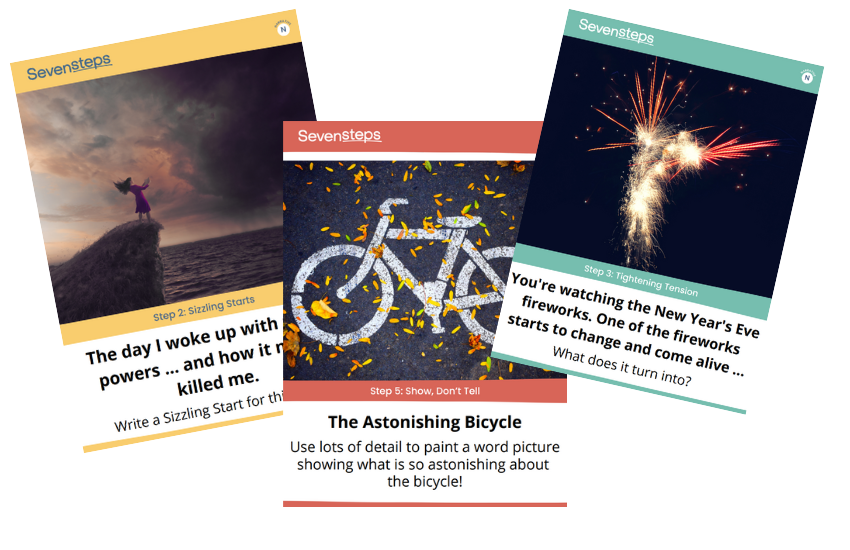
Writing prompts
Use these prompts daily or weekly as a fun way to:
- build students’ confidence
- nurture students’ creativity
- practise one writing technique at a time
- celebrate students’ writing.
Comprehensive resources to teach narrative writing
Narrative Writing Manual
Packed with practical, time-saving classroom resources,
this manual makes planning and implementing the Seven Steps
just as fun as learning it!
Includes a user-friendly digital file, plus a photocopy and
intranet licence for your entire school.
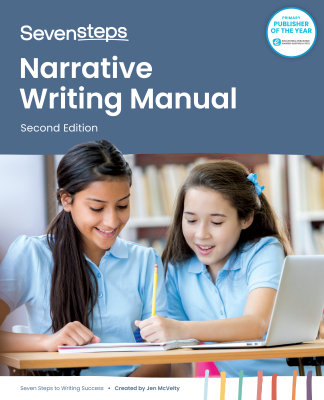
Narrative Writing Course
Become a Seven Steps member to enjoy full access to the Narrative Writing Course on Teacher Hub. It contains everything you need to learn and implement the Seven Steps.
A simple implementation plan guides you through each module, which includes short training videos, classroom PowerPoints and 100s of curriculum-aligned resources.
